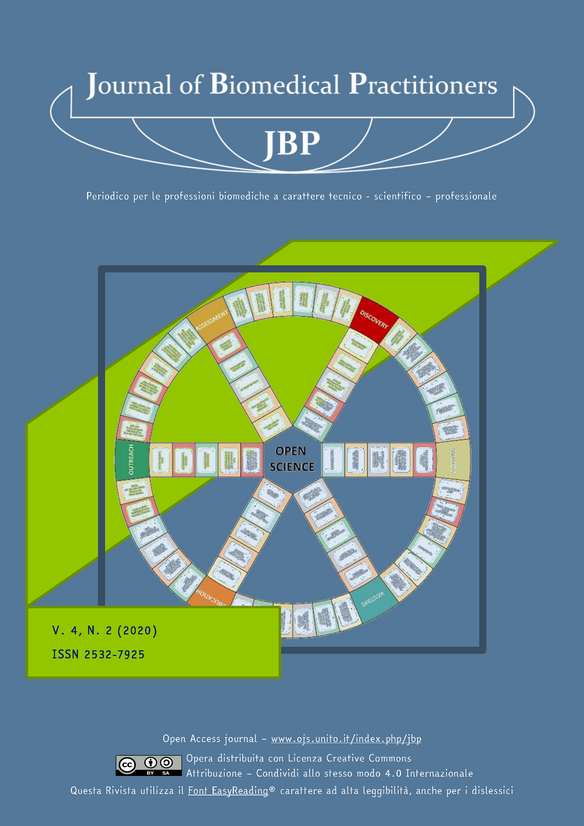Practical guide to drafting a clinical meta-analysis
Main Article Content
Abstract
Meta-analysis (or meta-analysis) is the technique that is used in a systematic review and consists in mathematical-statistical methods that allow to aggregate and combine data and results of different studies with small sample numbers or with discordant results, conducted on the same topic.
It can therefore allow to reach more relevant, reliable and powerful statistical conclusions.
It is important to know how to choose the studies to be considered correctly, to calculate their heterogeneity, to know (and possibly minimize) bias and knowing how to adequately show and comment on results.
This article wants to enclose all the references and steps necessary to write an adequate (and therefore easily publishable) meta-analysis.
Downloads
Article Details
The authors agree to transfer the right of their publication to the Journal, simultaneously licensed under a Creative Commons License - Attribution that allows others to share the work indicating intellectual authorship and the first publication in this magazine.
References
[2] M. Paul and L. Leibovici, “Systematic review or meta-analysis? Their place in the evidence hierar-chy,” Clinical Microbiology and Infection: The Official Publication of the European Society of Clinical Microbiology and Infectious Diseases, vol. 20, no. 2, pp. 97–100, Feb. 2014, doi: 10.1111/1469-0691.12489.
[3] T. Muka et al., “A 24-step guide on how to design, conduct, and successfully publish a systematic review and meta-analysis in medical research,” European Journal of Epidemiology, vol. 35, no. 1, pp. 49–60, Jan. 2020, doi: 10.1007/s10654-019-00576-5.
[4] D. Moher, A. Liberati, J. Tetzlaff, D. G. Altman, and T. P. Group, “Preferred Reporting Items for Systematic Reviews and Meta-Analyses: The PRISMA Statement,” PLOS Medicine, vol. 6, no. 7, p. e1000097, Jul. 2009, doi: 10.1371/journal.pmed.1000097.
[5] D. Moher, D. J. Cook, S. Eastwood, I. Olkin, D. Rennie, and D. F. Stroup, “Improving the quality of reports of meta-analyses of randomised controlled trials: the QUOROM statement. Quality of Report-ing of Meta-analyses,” Lancet, vol. 354, no. 9193, pp. 1896–1900, Nov. 1999, doi: 10.1016/s0140-6736(99)04149-5.
[6] G. Vithoulkas, “Serious mistakes in meta-analysis of homeopathic research,” Journal of Medicine and Life, vol. 10, no. 1, pp. 47–49, Mar. 2017.
[7] “Home - PMC - NCBI.” https://www-ncbi-nlm-nih-gov.bibliopass.unito.it/pmc/ (accessed Oct. 14, 2020).
[8] “Scopus - Document search.” https://www.scopus.com/search/form.uri?display=basic (accessed Oct. 14, 2020).
[9] “Web of Science [v.5.35] - Web of Science Core Collection Advanced Search.” https://apps.webofknowledge.com/WOS_AdvancedSearch_input.do?product=WOS&search_mode=AdvancedSearch&SID=C2zwWvvNmR4n67eQWsI&locale=en_US (accessed Oct. 14, 2020).
[10] E. D. Ecker and A. C. Skelly, “Conducting a winning literature search,” Evid Based Spine Care J, vol. 1, no. 1, pp. 9–14, May 2010, doi: 10.1055/s-0028-1100887.
[11] T. Pigott, Advances in Meta-Analysis. New York: Springer-Verlag, 2012.
[12] “Meta Power Calculator.” https://jtiebel.shinyapps.io/MetaPowerCalculator/ (accessed Oct. 14, 2020).
[13] “R: The R Project for Statistical Computing.” https://www.r-project.org/ (accessed Oct. 22, 2020).
[14] S. Balduzzi, G. Rücker, and G. Schwarzer, “How to perform a meta-analysis with R: a practical tuto-rial,” Evidence-Based Mental Health, vol. 22, no. 4, pp. 153–160, Nov. 2019, doi: 10.1136/ebmental-2019-300117.
[15] S. R. Shim and S.-J. Kim, “Intervention meta-analysis: application and practice using R software,” Epidemiol Health, vol. 41, Mar. 2019, doi: 10.4178/epih.e2019008.
[16] J. Higgins, T. Li, and J. Deeks, “Chapter 6: Choosing effect measures and computing estimates of ef-fect.,” in Cochrane Handbook for Systematic Reviews of Interventions, 2020.
[17] M. Bobbio, Trial clinici. Come interpretare e applicare i risultati di una ricerca scientifica. Centro Scientifico Editore, 1997.
[18] A. Ahlbom and S. Norell, Introduzione all’epidemiologia moderna. Il Pensiero Scientifico, 1993.
[19] Cochrane Injuries Group Albumin Reviewers, “Human albumin administration in critically ill patients: systematic review of randomised controlled trials,” BMJ, vol. 317, no. 7153, pp. 235–240, Jul. 1998, doi: 10.1136/bmj.317.7153.235.

